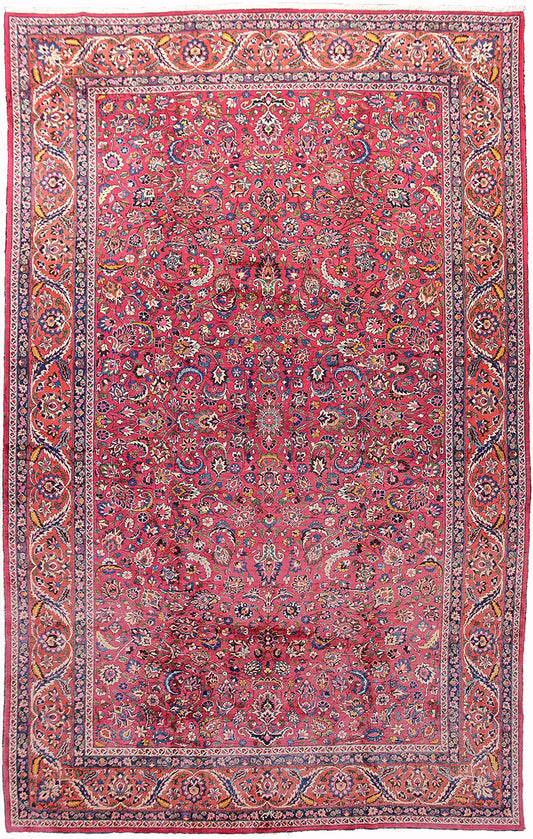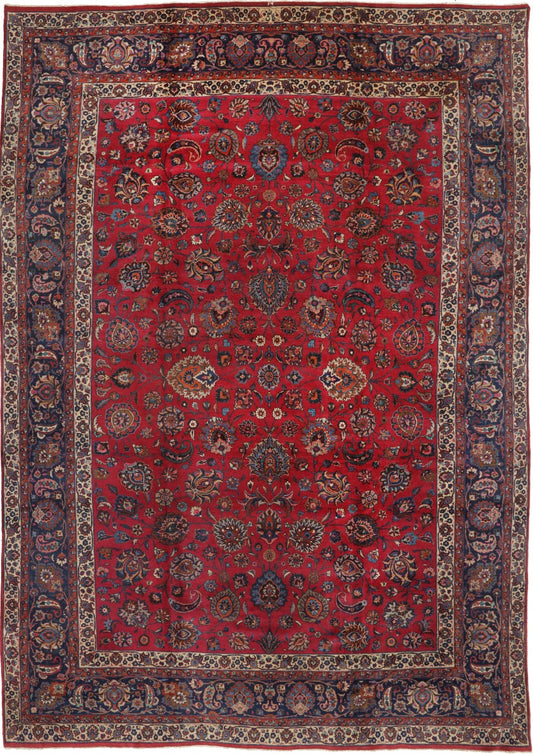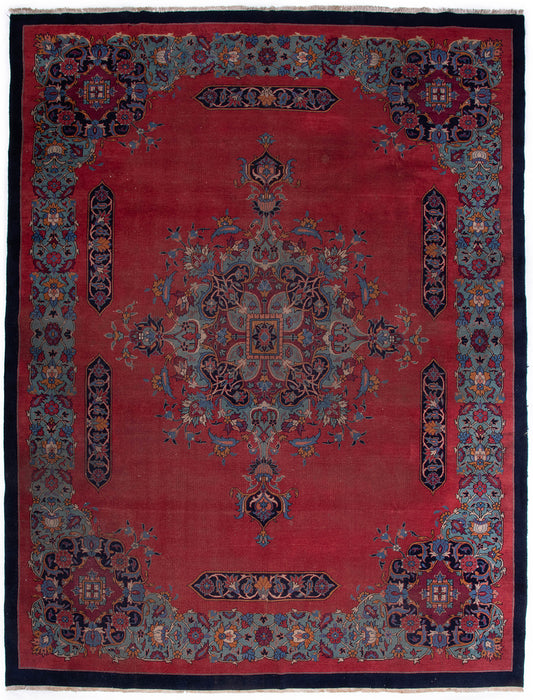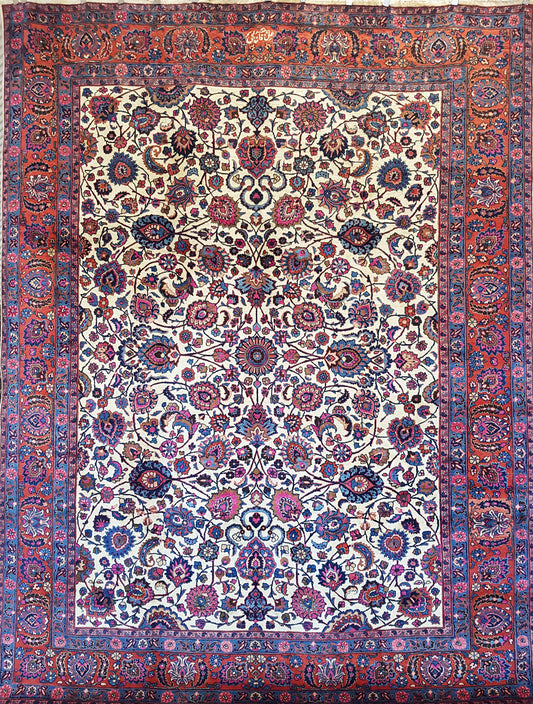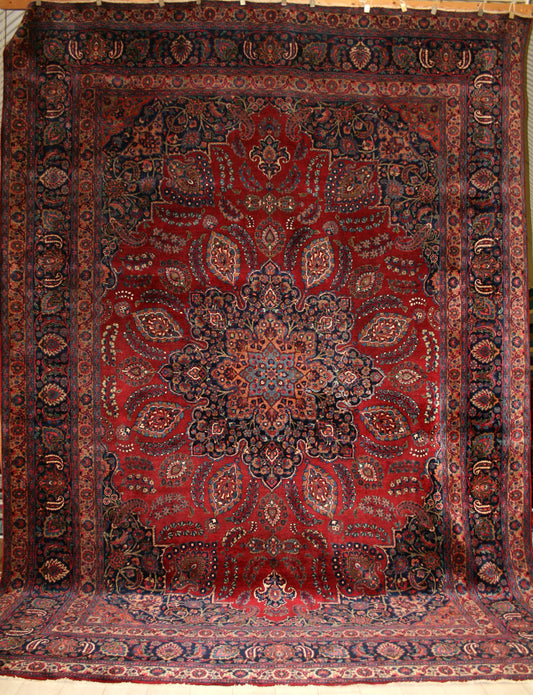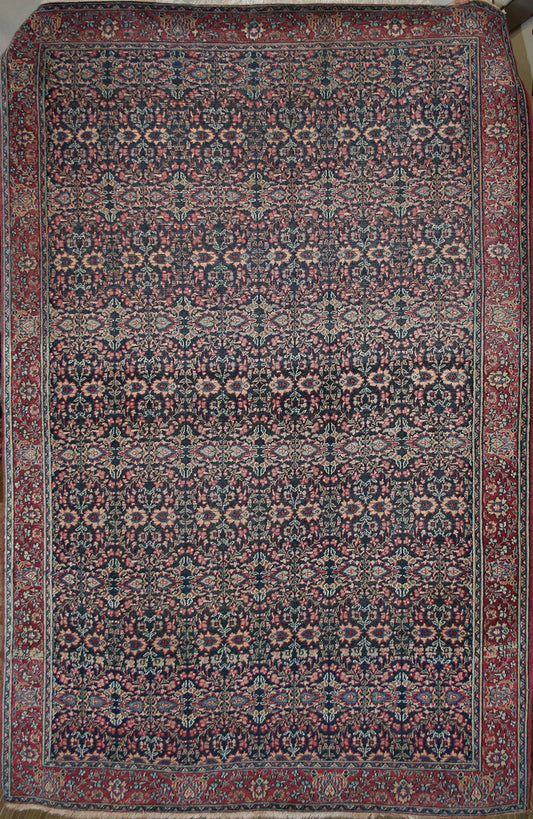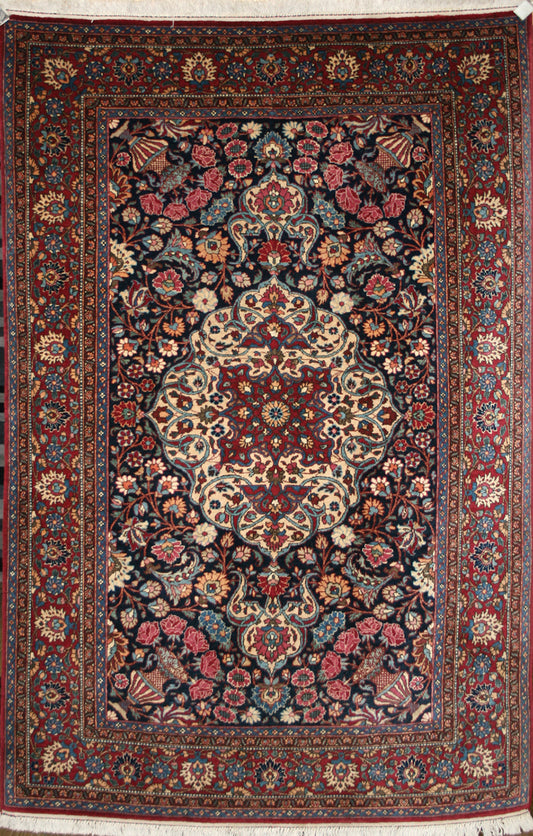Mashad Rug History & Origin Guide
An Introduction to Mashad Rugs
Delve into the enchanting world of Mashad rugs (also known as Mashhad), renowned for their exquisite craftsmanship, intricate designs, and rich history. Mashad, located in the northeastern region of Iran, is one of the country's most important rug-producing centres. Known for their high quality, Mashad rugs are sought after by collectors and enthusiasts worldwide.
History of Mashad
Mashad is the capital city of the Khorasan Razavi province and the second-largest city in Iran. It is an ancient city with a rich history dating back to the Sassanian Empire. Mashad's significance as a religious and cultural centre grew with the construction of the Holy Shrine of Imam Reza in the 9th century, which attracts millions of pilgrims annually.
Rug Making History in Mashad
The tradition of rug making in Mashad can be traced back to the 16th century during the Safavid dynasty. The city's strategic location along the Silk Road contributed to the growth of its rug industry as it facilitated trade and the exchange of artistic influences. Over the years, the craftsmanship and designs of Mashad rugs have evolved, incorporating diverse styles and techniques.
Types of Designs and Motifs
Mashad rugs are characterised by their intricate designs, which typically feature a central medallion surrounded by floral patterns, birds, and animals. The medallion may be circular, oval, or hexagonal, and it is often adorned with arabesques and palmettes. The field of the rug is usually filled with intricate floral patterns, including the Herati, Shah Abbasi, and Islimi motifs.
One of the most iconic designs found in Mashad rugs is the Khorassan pattern, which consists of a large central medallion, a spacious field filled with delicate floral motifs, and an ornate border adorned with palmettes and vines. This design is an excellent example of the intricate artistry and attention to detail that characterise Mashad rugs.
Colours Used in Mashad Rugs
The colour palette of Mashad rugs typically includes deep, rich hues such as red, blue, and ivory. These vibrant colours are derived from natural dyes made from plants and minerals, ensuring their longevity and resistance to fading. The combination of these colours results in a harmonious and visually stunning aesthetic that enhances the intricacy of the rug's design.
Materials and Knotting Details
Mashad rugs are made from high-quality materials, including sheep's wool, cotton, and silk. The wool used in the pile is sourced from local sheep and is known for its durability and softness. Cotton is used for the foundation, providing strength and stability to the rug. Some Mashad rugs also incorporate silk into the design, adding a touch of luxury and highlighting specific elements of the pattern.
The knotting technique used in Mashad rugs is the Persian knot, also known as the asymmetrical knot. Knot density in these rugs can vary, but higher-quality Mashad rugs typically have a knot count ranging from 120 to 840 KPSI (knots per square inch). The high knot density allows for the intricate designs and fine detailing that make Mashad rugs so sought after.
Famous Weavers and Workshops
Mashad is home to several renowned weavers and workshops that have contributed significantly to the art of rug making. One of the most famous is Amoghli, a workshop established by the legendary weaver Saber Amoghli. The Amoghli workshop is known for producing rugs of exceptional quality, intricacy, and artistic merit.
Famous Rugs from Mashad
The rugs produced by the Amoghli workshop are highly sought after by collectors and enthusiasts alike. One of the most famous is the 'Amoghli Mashad' rug. This exquisite piece is renowned for its intricate detailing, high knot density, and use of high-quality materials. The central medallion design surrounded by a densely floral decorated field is a hallmark of Amoghli's work.
Another famous rug from Mashad is the 'Kashmar Mashad', known for its unique pictorial designs. These rugs often depict historical scenes, Persian legends, or hunting scenes. The use of vibrant colours and detailed imagery makes these rugs stand out in any setting.
Demographics and Information About the Area
Mashad is a bustling city with a population of over 3 million people. As the capital of Khorasan Razavi province, it serves as an important cultural, religious, and economic centre. The city is located in the northeast of Iran, near the borders with Afghanistan and Turkmenistan.
Nearby Rug-Producing Areas
There are several other rug-producing areas in close proximity to Mashad. Some of these include the cities of Quchan, Kashmar, and Nishapur. Each of these areas has its distinct rug-making traditions and styles, further enriching the diverse world of Persian rugs.
Climate and Weather
Mashad experiences a semi-arid climate, with hot summers and cold winters. The average temperature in summer ranges from 25 to 35 degrees Celsius, while in winter, it can drop to -10 degrees Celsius. The city receives moderate rainfall, mostly during the spring and autumn months.
Best Time to Visit
The best time to visit Mashad is during the spring (April to June) or autumn (September to November), when the weather is pleasant and the city is in full bloom. These seasons also coincide with the Nowruz and Muharram celebrations, offering visitors a chance to experience Mashad's vibrant culture and rich traditions.
Top Tourist Destinations
Some of the top tourist destinations in Mashad include the Holy Shrine of Imam Reza, the Goharshad Mosque, and the Nader Shah Afshar Museum. Visitors can also explore the city's bustling bazaars, where they can find a wide range of handcrafted goods, including Mashad rugs.
Cultural and Artistic Events
Mashad hosts several cultural and artistic events throughout the year, such as the International Festival of Imam Reza and the Silk Road Exhibition. These events showcase the city's rich heritage and provide an opportunity for locals and visitors to celebrate and appreciate the beauty of Mashad's art and culture.
Immerse yourself in the captivating world of Mashad rugs and experience the exceptional artistry that has been passed down through generations. To explore our current collection of Mashad rugs, please visit our Mashad rugs collection.
Browse Our Current Selection of Mashad Rugs
-
Persian Mashad Mahwalat Rug
Regular price £4,845.00Regular priceUnit price / per -
Persian Mashad Rug
Regular price £5,615.00Regular priceUnit price / per -
Antique Persian Mashad Rug
Regular price £4,225.00Regular priceUnit price / per -
Persian Mashad Rug
Regular price £4,755.00Regular priceUnit price / per -
Semi-Antique Persian Mashad Rug
Regular price £4,245.00Regular priceUnit price / per -
Persian Mashad Runner Rug
Regular price £2,795.00Regular priceUnit price / per -
Antique Persian Mashad Rug
Regular price £3,185.00Regular priceUnit price / per -
Persian Mashad Rug
Regular price £2,655.00Regular priceUnit price / per -
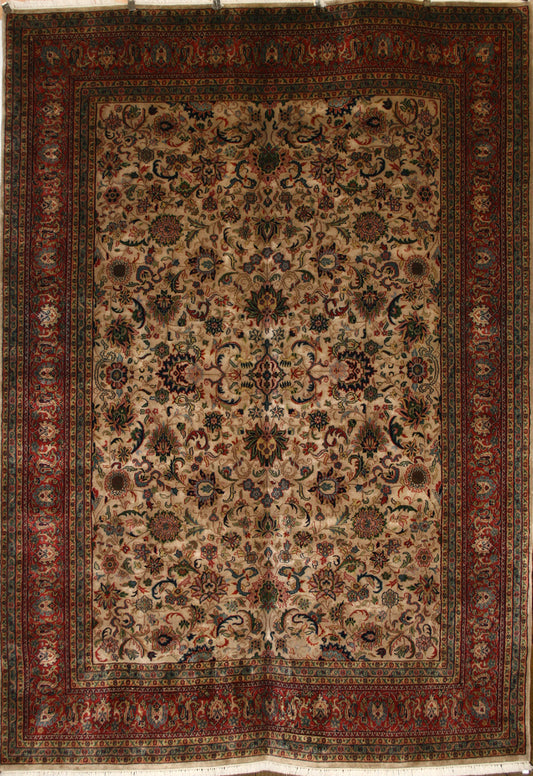 Sale
SaleIndian Mashad Rug
Regular price £3,715.00Regular priceUnit price / per£4,245.00Sale price £3,715.00Sale -
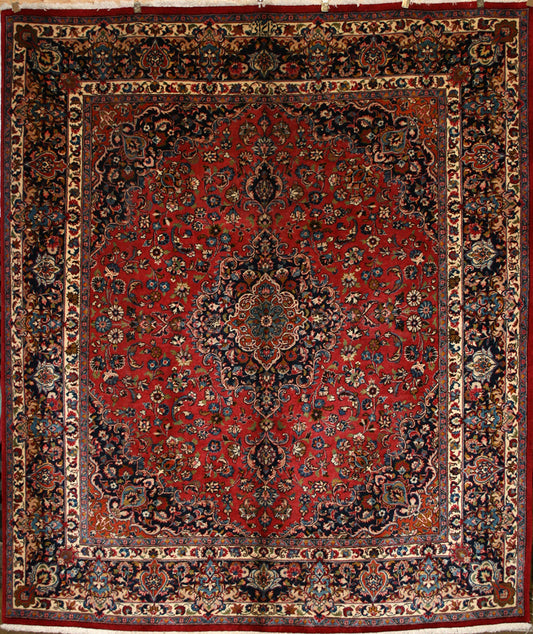 Sale
SalePersian Mashad Rug
Regular price £3,715.00Regular priceUnit price / per£4,245.00Sale price £3,715.00Sale -
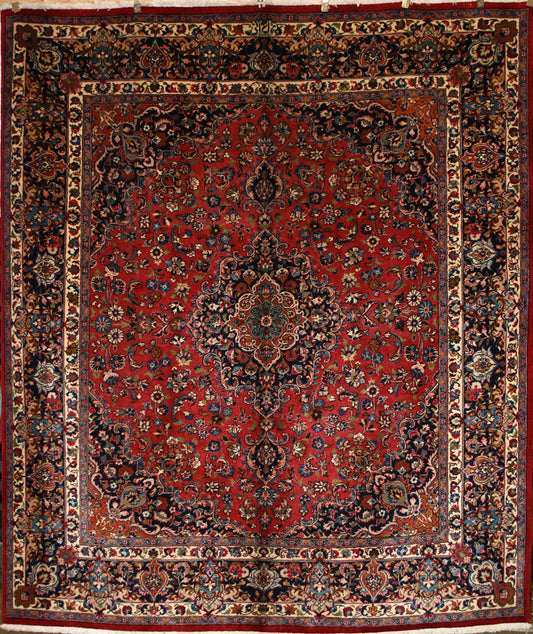 Sale
SalePersian Mashad Rug
Regular price £3,715.00Regular priceUnit price / per£4,245.00Sale price £3,715.00Sale -
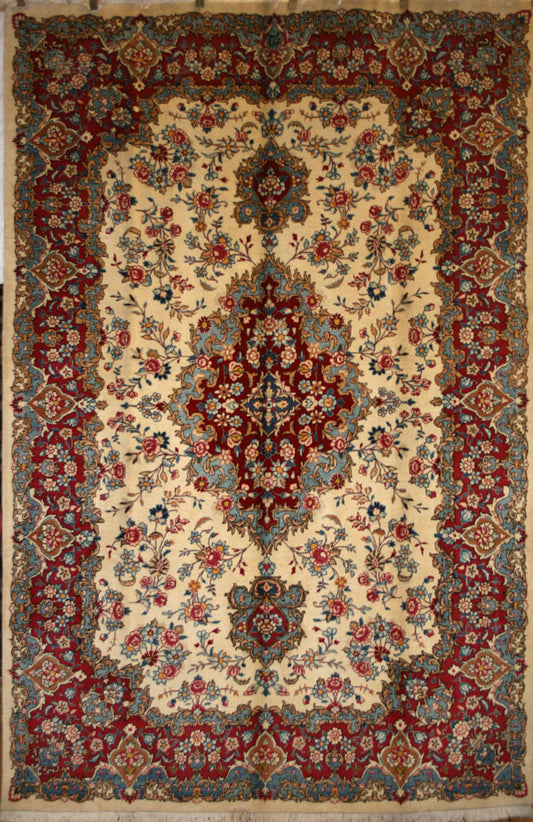 Sale
SalePersian Mashad Rug
Regular price £2,545.00Regular priceUnit price / per£3,185.00Sale price £2,545.00Sale

